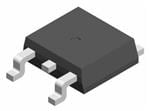-
A good PCB layout for optimal thermal performance involves placing the device near a thermal pad or a heat sink, using a large copper area for heat dissipation, and minimizing the thermal resistance between the device and the heat sink.
-
To ensure reliable operation at high temperatures, it's essential to follow the recommended operating conditions, use a suitable heat sink, and ensure good thermal coupling between the device and the heat sink. Additionally, consider using a thermal interface material to minimize thermal resistance.
-
For EMI and EMC compliance, consider using a shielded enclosure, minimizing loop areas in the PCB layout, using a common-mode choke, and ensuring that the device is properly decoupled. Also, follow the recommended layout guidelines and use a suitable EMI filter if necessary.
-
When selecting input and output capacitors, consider the voltage rating, capacitance value, and equivalent series resistance (ESR). Choose capacitors with a suitable voltage rating, and ensure that the capacitance value is sufficient to filter out ripple and noise. Also, consider the ESR to minimize energy losses.
-
During operation, monitor the input voltage, output voltage, output current, and temperature. Also, keep an eye on the device's power dissipation and thermal performance to ensure reliable operation.
 STPS40150CG-TR datasheet
by STMicroelectronics
STPS40150CG-TR datasheet
by STMicroelectronics
 STPS40150CG-TR datasheet
by STMicroelectronics
STPS40150CG-TR datasheet
by STMicroelectronics